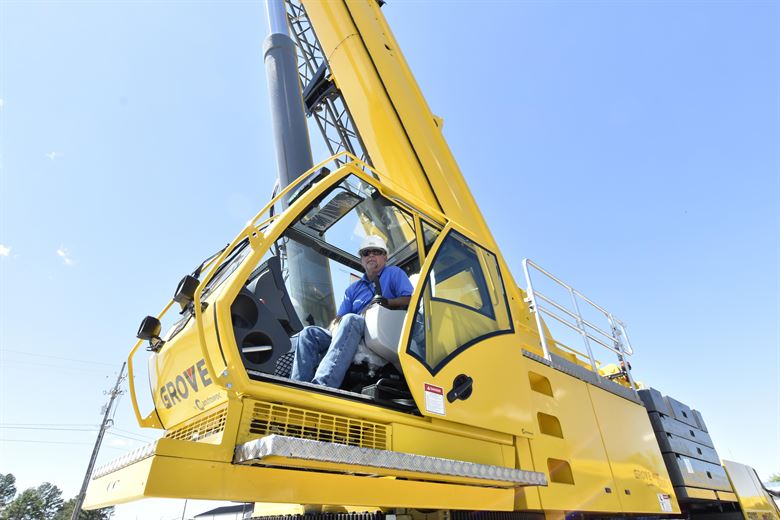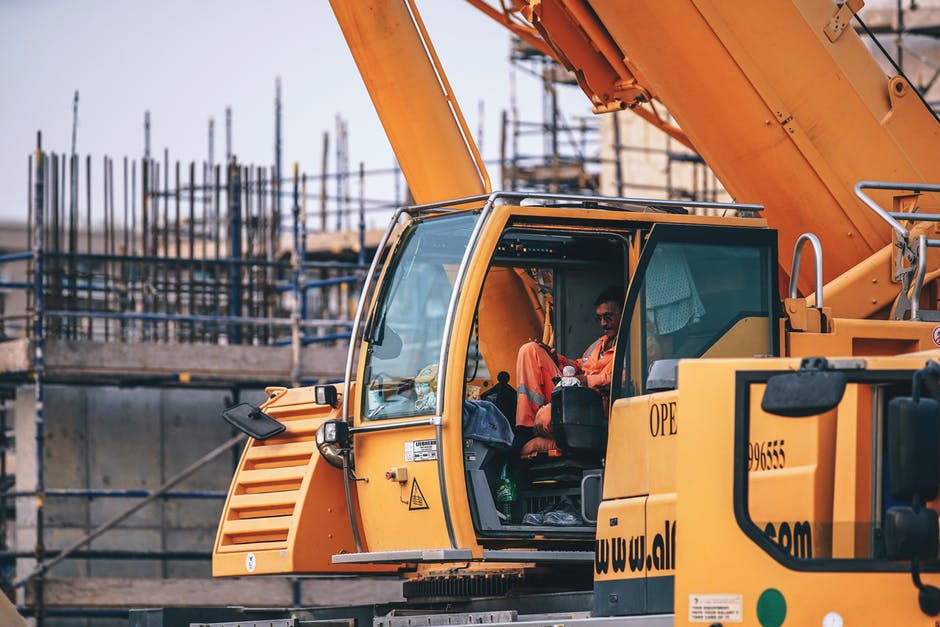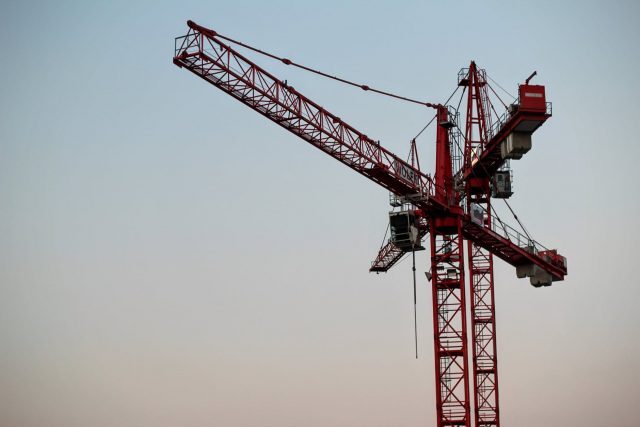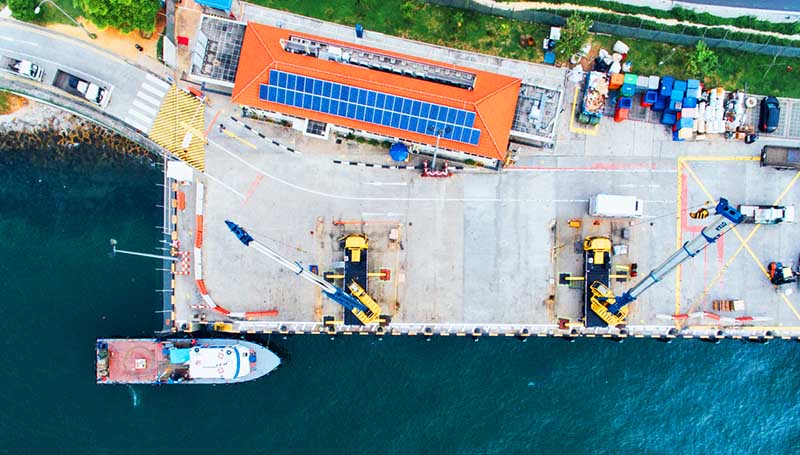When most people think of cranes they think of construction (and rightly so!). Cranes are used to lift and move loads which are beyond human ability to transport simply, so they are commonly employed in loading and unloading freight or in material movement during construction. We at Sheedy Crane specialized in these typical functions of cranes. But these traditional and well-known uses of cranes aren’t the whole story. Cranes for film production have a rich and widely varied history and are responsible for many iconic scenes in a countless number of blockbuster films.
Why cranes are essential in film production
Cranes are essential in film production because they allow filmmakers to capture shots that would otherwise be impossible. Cranes can move in multiple directions, providing filmmakers with the ability to capture unique angles and perspectives. They also allow for smooth, steady movement, which is essential for creating visually stunning shots.
Introducing: Crane Shots
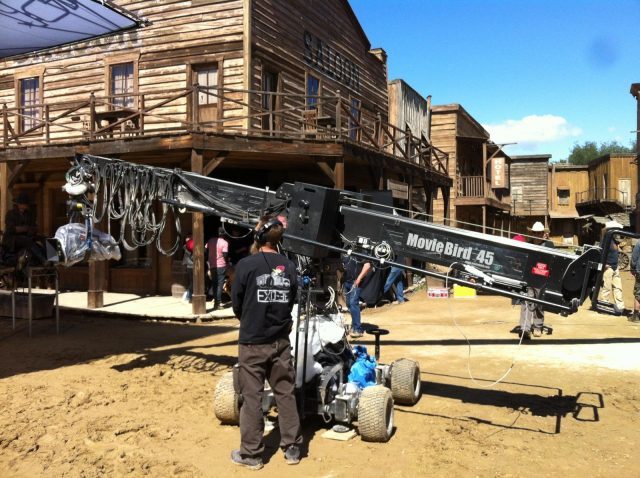 The ground-breaking addition of cranes to the repertoire of tools used in film production can be traced back to 1916, with the film Intolerance. This D.W. Griffith silent film features what is widely accepted as the first “crane shot.” The inventor and engineer Allan Dwan, a fellow film director, dreamed up the yet-unheard-of shot for Griffith’s film. The result had an impact, making audience members gasp in wonder from the grandiosity and scale of the sight.
The ground-breaking addition of cranes to the repertoire of tools used in film production can be traced back to 1916, with the film Intolerance. This D.W. Griffith silent film features what is widely accepted as the first “crane shot.” The inventor and engineer Allan Dwan, a fellow film director, dreamed up the yet-unheard-of shot for Griffith’s film. The result had an impact, making audience members gasp in wonder from the grandiosity and scale of the sight.
Not long thereafter, camera cranes created to elicit just such a reaction became popular at major movie studios. They were typically produced as massive monstrosities, specialty items created by large ironworks companies. They got bigger and heavier, carrying multiple people and the cumbersome camera equipment of the day. Each crane was built with a specific shot or purpose in mind, and as such their appearance and capabilities varied greatly, while their mobility was limited.
Different types of cranes used in film production
There are several types of cranes used in film production, including the telescopic crane, the camera crane, and the jib arm. Each of these cranes has its own unique features and benefits, making it important to choose the right crane for the specific shot you want to capture.
Telescopic cranes are the most common type of crane used in film production. They allow for smooth, continuous movement, and can reach heights of up to 100 feet. Camera cranes, on the other hand, are smaller and more lightweight, making them ideal for capturing shots in tight spaces.
Jib arms are another popular type of crane used in film production. They are ideal for capturing shots that require a lot of movement, such as tracking shots and crane shots. Jib arms can be mounted on a tripod or attached to a dolly, providing filmmakers with even more flexibility and control.
Benefits of using cranes in film production
Using cranes in film production offers several benefits, including increased flexibility, improved shot quality, and more efficient production. Cranes allow filmmakers to capture shots that would otherwise be impossible, giving them more creative control over their work. They also make it easier to create smooth, seamless shots, which can help improve the overall quality of the film.
In addition, using cranes in film production can help make the production process more efficient. By using cranes, filmmakers can capture multiple shots in a single take, reducing the need for multiple retakes and speeding up the production process.
The Camera Crane Revolution
And so it was, for over 20 years in the film industry. Bulky cranes for film production with little flexibility stayed on studio lots, seldom transported to on-location shoots. That all changed in the late 1940’s, when Ralph Chapman, a special effects technician with a knack for engineering, developed a line of cranes. His gasoline-powered film crane could travel on location independently, revolutionizing the use of exterior crane shots in film. Before long, these mobile crane units were available for hire.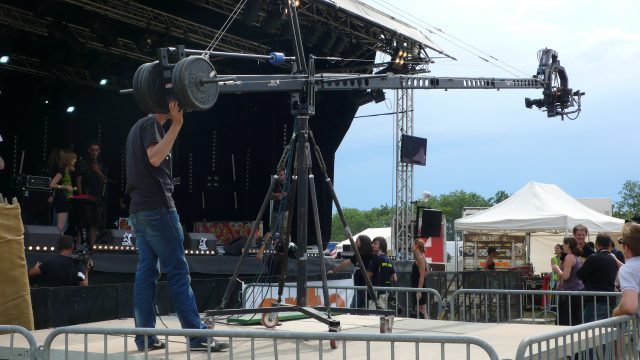
Television and sports soon joined the fray, and the high-angle boom shots became popular in filming dance numbers, creating emotive scenes, and covering sports, much to the delight of audiences. Since the early days of limited, one-off cranes made for particular shots, technology has exploded. Crane capability has vastly improved, alongside the safety-consciousness and expertise of operators. The use of crane shots in both television and film is ubiquitous in the modern era of entertainment.
Cranes for Film Production Today
Studios and production companies generally rent crane equipment from the manufacturers who own them. This cuts down on costs and allows for a variety of cranes to be used on a production. The usage of rented cranes in film and production has seen a decline in recent years, as the introduction of drones and light-weight digital cameras have revolutionized the industry. Despite this shift, there will no doubt always be room for the silent, sweeping shots which can only be obtained by the massive cranes originally designed decades ago. They are a part of the history and future of the crane industry, and will help tell stories in a way nothing else can for years to come.
Got any questions about crane rental or our other services? Contact us today or give us a call at (415) 648-7171.


